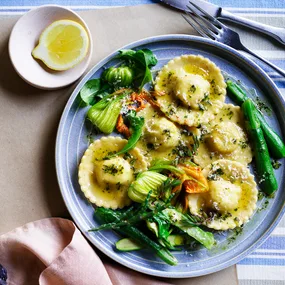Fusion food gets a bad rap, often for good reason (whoever thought pasta and curry sauce made a good combination was clearly deluded – and no, we didn’t make that up). But some dishes manage to fuse two cultures and cuisines with serendipitous results. Take Vietnam’s banh mi, for example. The starting point for any banh mi is the bread, a crunchy-crusted, fluffy-centred baguette (the name banh mi actually refers to the bread itself), introduced to Vietnam in the 18th century, when the country fell under French rule.
The bread used for banh mi has evolved somewhat from its French origins, though – where once it would have contained only wheat flour, the Vietnamese have tweaked it to include rice flour as well, which is what gives it a beautifully crackly crust and featherlight interior.
Throughout the French colonial period, the fillings were typical of what you might find in France – jambon, fromage or pâté. It wasn’t until much later, once the French vacated Vietnam, that the fillings took on the Vietnamese flavours we see in banh mi today. Pâté remains, but in place of the ham is roast pork belly (and usually other lunch meats), along with a generous handful of coriander and slices of birdseye chilli for heat. Pickled vegetables such as carrot and daikon add gorgeous crunchy texture.
Some versions of banh mi also include prawns, Vietnamese sausage, grilled pork, grilled pork patties, chicken floss or pork floss, while you can also find a vegetarian version made with a tofu filling.
There’s even a breakfast banh mi, filled with fried egg and onion, and drizzled with soy sauce. Sometimes a mayonnaise-like spread is added and it’s not unusual for Maggi seasoning to make an appearance too. The flavours of a perfect banh mi should sing effortlessly from salty to sweet to hot, while the textures should burst in your mouth – it’s all about contrast. And it’s an example of great fusion if ever there was one.
Crunchy, spicy, tangy and cool, Vietnam’s evolution of the French baguette is a fusion classic in its own right.
Ingredients
Method
Main
Note Buy the rolls from a Vietnamese bakery if you can. If they’re unavailable, use other crusty white rolls.
Notes










